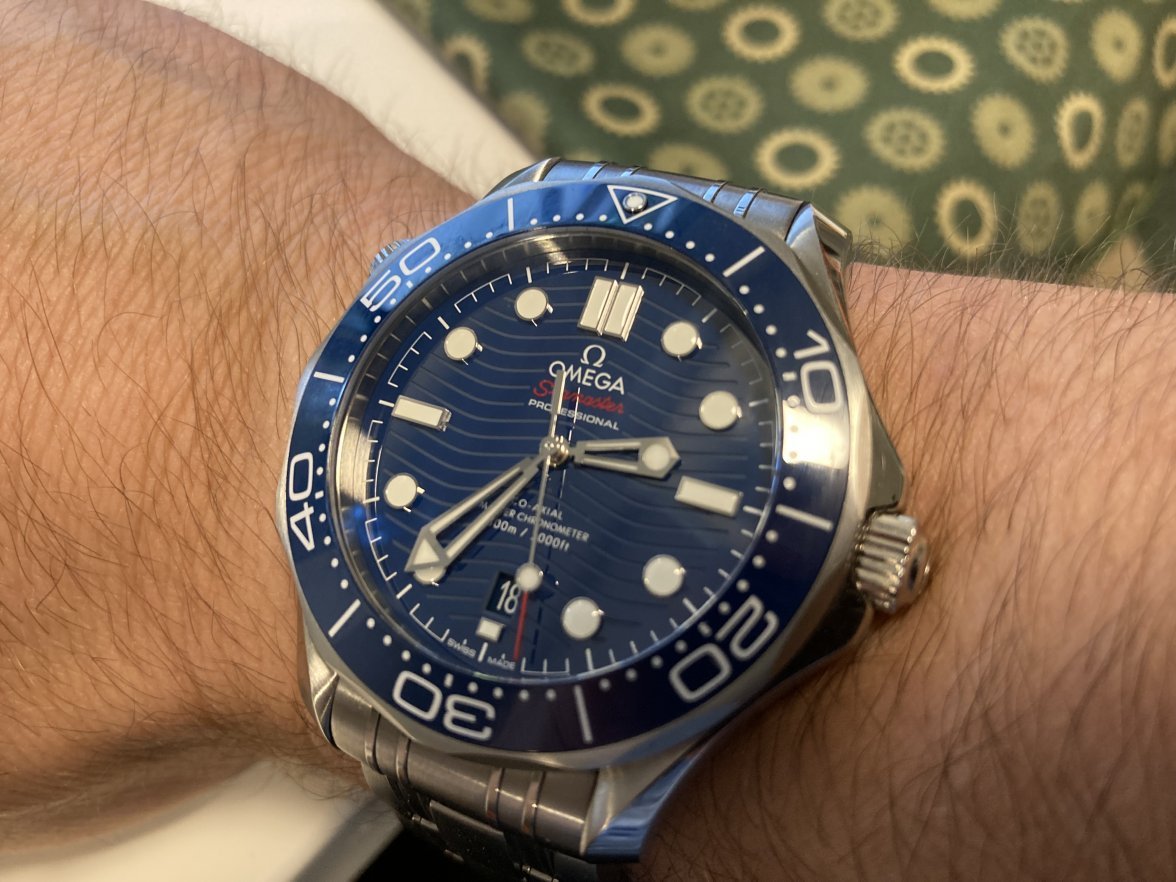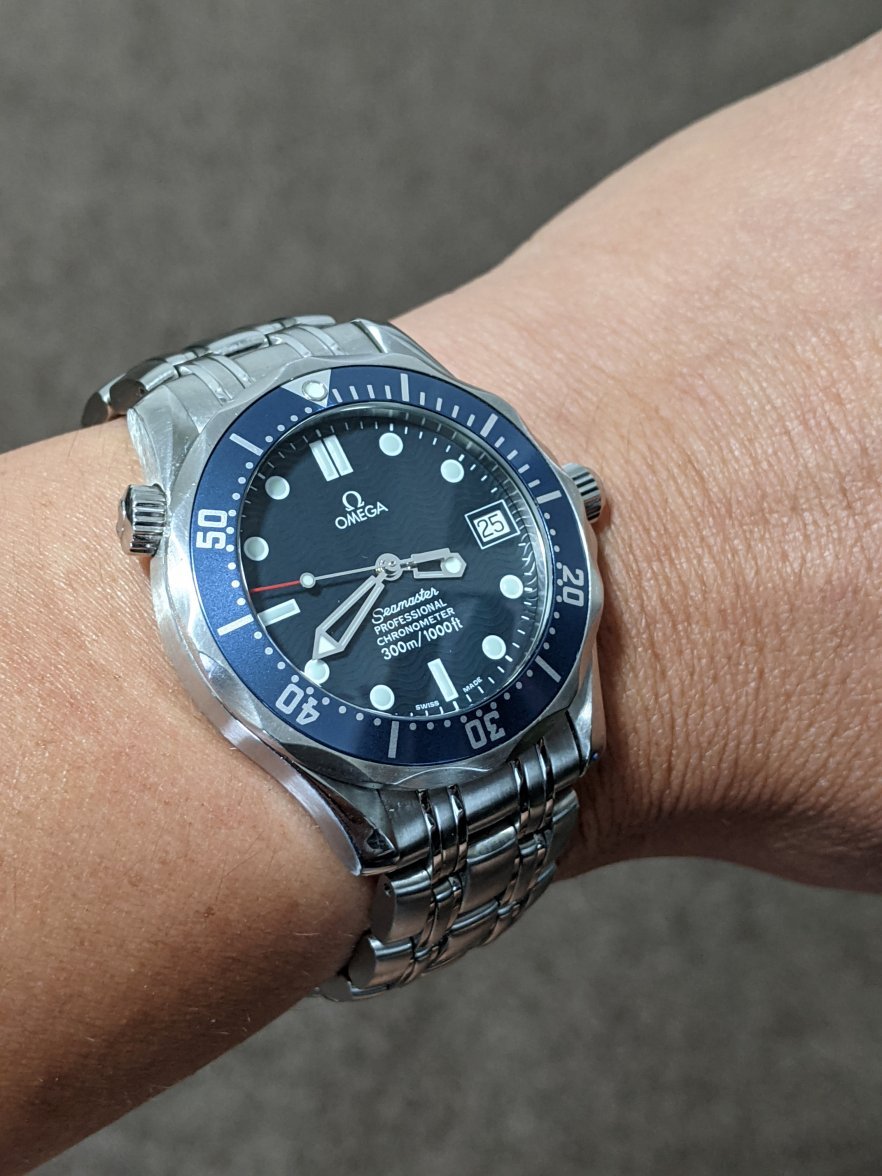Annapolis
·Just wanted to share.
Got my SMP300 (blue on blue) a while back---had the clasp-stuck-closed-while-on-my-wrist issue a week in, but got the watch off and the AD took good care of me. (Still makes me a little nervous, but hasn't been an issue since getting the new clasp.)
Anyway, right out of the box, I noticed that watch was gaining---probably more than 6 seconds a day. Borderline out-of-spec, perhaps, but I know that spec is based on an averaging of several positions.
I decided to try some positional self-regulating. Once I began consistently storing the watch at night (and on days when I wear another watch) face-down, I noticed that it began to run more slowly, but was still a bit fast.
Now, after several weeks of doing this, the watch is pretty much +/-0 seconds per day, and is holding steady.
I have to think that's a combination of the self-regulating and the movement having gotten broken-in. Just sharing... I don't know why. Because if OFers don't care, who else will? 😀 But it does impress me, that Omega's qc process seems to be able not only to analyze a watch's performance at the time of inspection, but also to anticipate how that watch will perform once it's out in the world for a while and things have settled in a bit. (I had a similar experience with a Submariner last year---from new-out-of-the-box to daily-wear for a few months, a significant improvement in timekeeping.)
Will add a picture, since that's just good forum etiquette.
Got my SMP300 (blue on blue) a while back---had the clasp-stuck-closed-while-on-my-wrist issue a week in, but got the watch off and the AD took good care of me. (Still makes me a little nervous, but hasn't been an issue since getting the new clasp.)
Anyway, right out of the box, I noticed that watch was gaining---probably more than 6 seconds a day. Borderline out-of-spec, perhaps, but I know that spec is based on an averaging of several positions.
I decided to try some positional self-regulating. Once I began consistently storing the watch at night (and on days when I wear another watch) face-down, I noticed that it began to run more slowly, but was still a bit fast.
Now, after several weeks of doing this, the watch is pretty much +/-0 seconds per day, and is holding steady.
I have to think that's a combination of the self-regulating and the movement having gotten broken-in. Just sharing... I don't know why. Because if OFers don't care, who else will? 😀 But it does impress me, that Omega's qc process seems to be able not only to analyze a watch's performance at the time of inspection, but also to anticipate how that watch will perform once it's out in the world for a while and things have settled in a bit. (I had a similar experience with a Submariner last year---from new-out-of-the-box to daily-wear for a few months, a significant improvement in timekeeping.)
Will add a picture, since that's just good forum etiquette.




